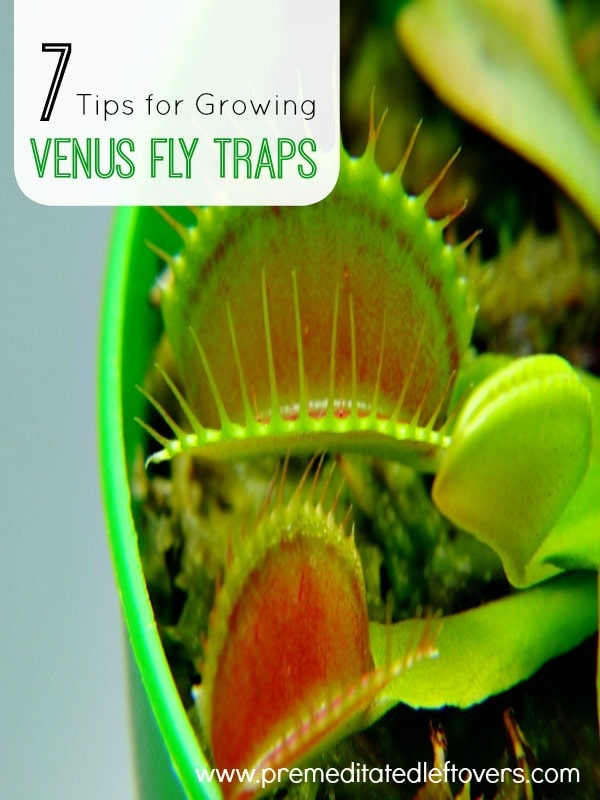Venus flytraps are a fun plant to introduce to children, as they are one of the few meat eating plants and quite an exotic variety! Even though Venus flytraps are meat eaters, you shouldn’t be scared of them as they are quite gentle plants and even easy to care for. If you want a Venus flytrap of your own but aren’t sure how to care for one, no worries! Take a look below at 7 Tips for Growing Venus Flytraps. You will find that they can be a fun and easy plant to have around.
7 Tips for Growing Venus Flytraps
1. They love light, so give them lots. In this case, the more the better! Your Venus flytrap will appreciate a solid 6 hours of sunlight per day. Be sure you set the plant in an area where it will get at minimum this amount of sunlight.
2. Use distilled water. Venus flytraps prefer clean, distilled water. Avoid using faucet water and instead keep distilled water on hand for feedings. Your Venus flytrap is sure to appreciate it when it is ready to drink.
3. Keep the soil wet. You never want the soil that your plant rests in to dry out. In fact, you want it damp and slightly muddy. Your Venus flytrap will appreciate wet soil as it is accustomed to a tropical environment where the soil is as such.
4. Provide some humidity. You may need to put a cover over your Venus flytrap in order to provide some humidity. This can be a plant cloche or even the bottom half of a plastic bottle. This will help keep heat and moisture in and provide some humidity for the plant.
5. Remove small traps. As the plant blooms and grows, it is ok to snip off any tint traps as they will hinder the growth of the plant. As soon as you see any small, weak traps, go ahead and snip them right under the head.
6. Feed your flytrap! Ideally a fly or two would land in the Venus flytrap, but that doesn’t always happen, especially if you are raising your plant indoors. Help out your Venus flytrap by giving it freeze dried blood worms, available at most pet stores. You can simply add water to them to hydrate them (the worms) and drop them into the mouth of the plants. The worms touching the plant should trigger the plant to close, but if it doesn’t just tap the inside with a toothpick and it will clasp.
7. Develop a feeding pattern. You don’t want to feed every trap every week. Instead, feed a quarter of the traps each week and alternate weekly. So if your plant has 4 traps on it, you will feed one of the traps per week, alternating between each. This helps you avoid overfeeding which can be an issue with Venus flytraps. Remember, just because the trap’s mouth is open, it doesn’t mean it needs to eat.
See how fun and easy it can be to grow a Venus flytrap of your own? Give these tips for caring for Venus flytraps a try and you are sure to have some success with these interesting and exotic plants.


Tara says
I want buy plant
Venus fly trap
And
Your page it’s so good